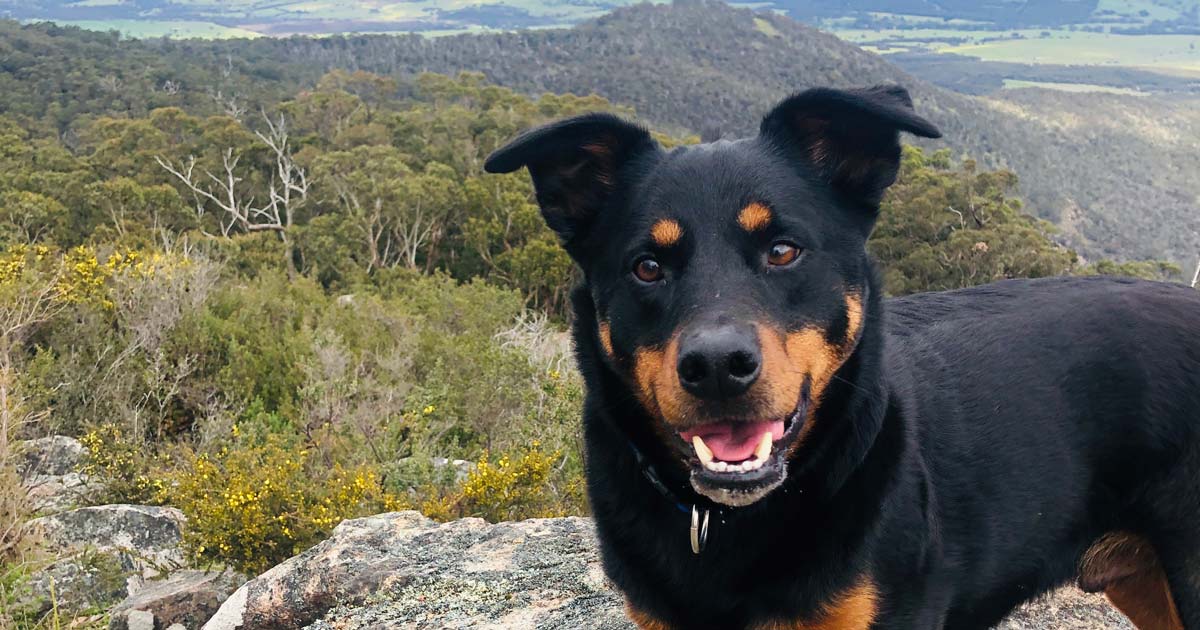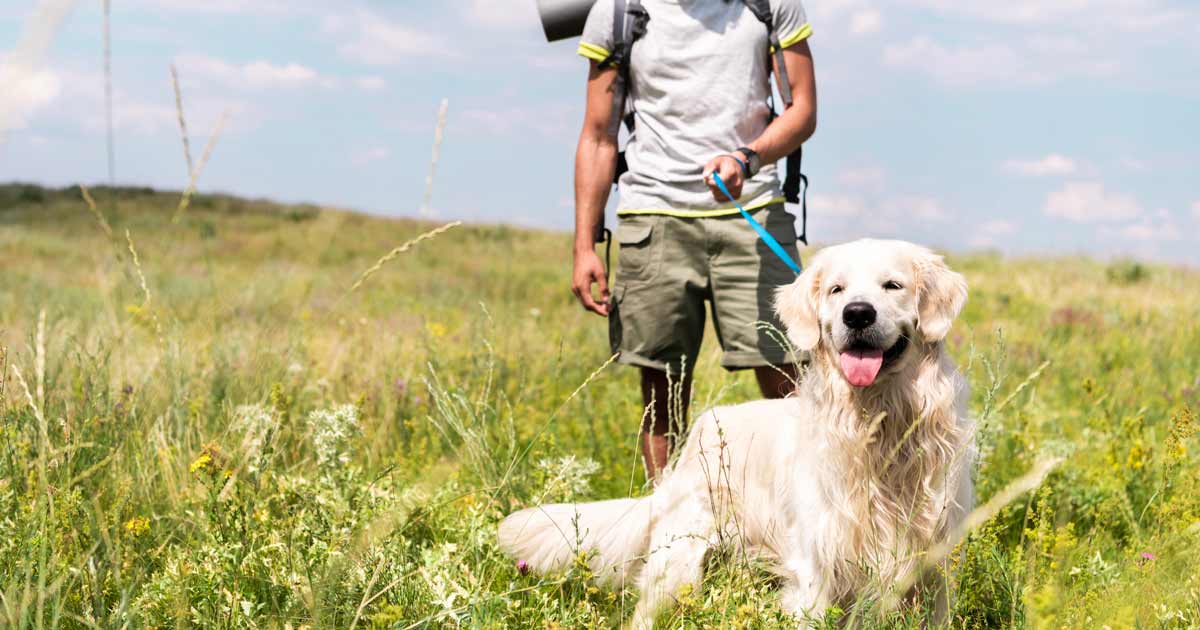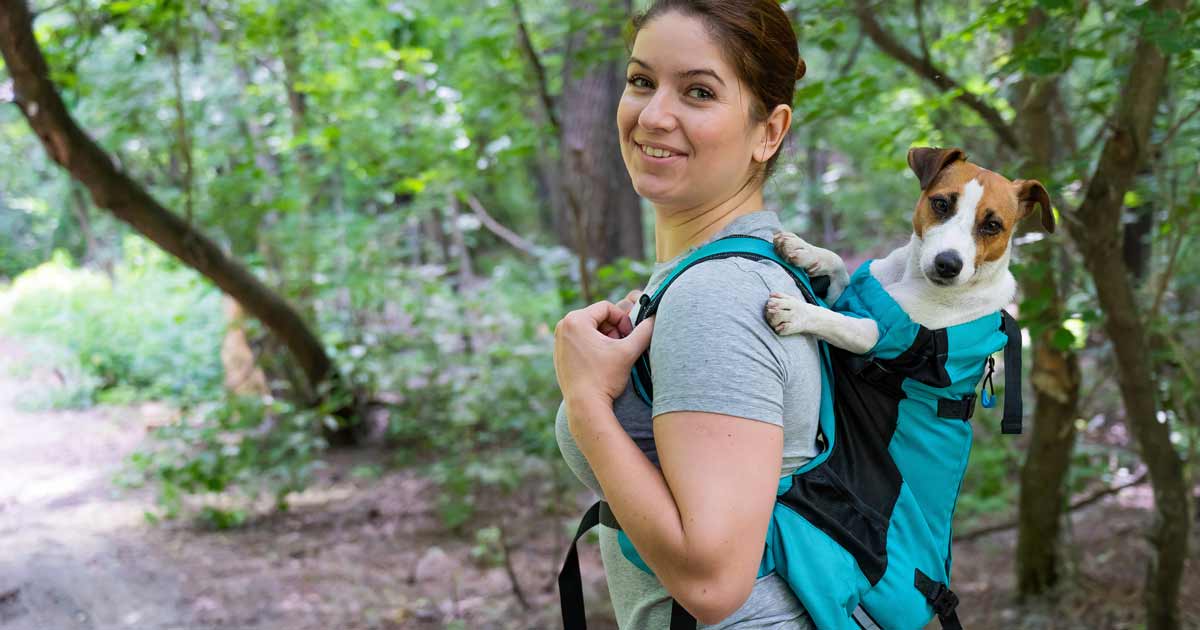Exploring dog friendly trails
Are you an avid hiker but instantly feel stressed at the idea of bringing your furry friend along for the ride? Hiking with your dog can be a fun experience and needn’t be stressful, but preparation is key to ensuring a safe and enjoyable adventure. It’s important to be familiarise yourself with trails that are dog friendly, especially in or around national parks, as well as potential hazards including 1080 poison, dirty water sources, and more.
In this beginner’s guide to hiking with your dog, I break down how to prepare for a hike with your dog, what gear to take with you, and hazards to be aware of.
Hiking with your dog: Preparation

Choose Dog-Friendly Trails
Research dog-friendly hiking trails in your area. Most national parks in Australia don’t allow dogs, however, certain states, for example South Australia are a little more relaxed on this subject. I recommend checking multiple sources, including your local state website to double check the rules on what’s allowed, and what isn’t. Dogs can have a significant negative impact on wildlife in Australia if taken into the bush. They can chase, attack, and kill native animals, including endangered species. They can also spread diseases to native animals so, make sure you understand the impact before heading out.
Health Check
Before embarking on a potentially strenuous hike with your dog, you’ll want to ensure he or she is in good health and physically capable to take on the challenge. You may want to consult your vet for a check-up, especially if your dog is older or has any health concerns. Alternatively, you can try a short, easy trail to get your furry friend used to the physical demands of a hiking trail, before taking on some of the more challening ones.
Training
If this is your dog’s first time hitting the trails, you’ll want to make sure you have some basic obedience commands down pat. This is crucial if you spot any hazards or notice your dog straying off the trail and into the bush. Simple commands like “sit,” “stay,” and “come” are crucial. Similarly, you’ll want to make sure your dog is comfortable and under control on-leash, especially with the excitement of new smells, sounds, and animals.
Hiking with your dog: What gear to bring

Dog First Aid Kit
The bush can be an exciting destination for your furry friend, but it can present a set of dangers, which range from cuts and scrapes, to run-ins with native wildlife. A comprehensive first aid kit, designed specifically for dogs is a vital piece of equipment when hiking with your dog, especially when you’re deep into a hiking trail and the nearest vet might be hours away.
Collapsible Dog Bowl
When you’re in the wilderness, a collapsible dog bowl is an absolute must. Being that it’s collapsible, it won’t take up much space in your backpack and will help keep your dog hydrated and away from potentially polluted streams and rivers.
Dog-Friendly Harness and Leash
A sturdy dog harness helps to distribute pressure across your dog’s body, providing better control and reducing the risk of injury compared to a collar when hiking with your dog. Pair it with a reliable and (ideally) extendable leash to keep your dog secure on a hike.
Dog Booties
Dog booties, alongside a dog first aid kit, are probably one the most important pieces of equipment you can take with you on a hike with your dog. They can help protect your furry friend from sharp rocks, bindis, and hot surfaces, whilst also giving your dog the traction and grip that he/she needs to take on a hiking trail. Make sure you pick booties that fit well to avoid discomfort.
ID Tags
An ID tag with your contact information is a must-have in case your dog gets separated from you on a hiking trail. There’s also a trend we’re seeing where dog owners are using Apple airtags to keep track of their furry friends. Definitely something to consider if you plan to go hiking with your dog on a regular basis.
Hiking with your dog: Hazards

Wildlife
Keep an eye out for local wildlife, including snakes, spiders, and insects whilst you’re on the trails. It’s important that native animals and insects are undisturbed wherever possible, and therefore, it’s really important to keep your dog on a leash to prevent unexpected encounters. This not only protects your furry friend, but also ensures the local wildlife remain wild.
Weather Conditions
We all know that the weather in Australia can be unpredictable. Whether you’re in the tropical north, or the sub-tropical south, protect your dog from the elements with appropriate gear, such as a cooling bandana in the summer, a jacket for the colder months, and lots of water, regardless of temperature, to keep your dog hydrated. It’s also advisable to monitor weather conditions before hitting the trails to avoid bushfires, landslides and floods.
Streams and Rivers
Keeping your dog away from streams and rivers whilst hiking is crucial for their safety and well-being. Whilst a pool of water on a hot day may seem inviting, there are several hidden dangers in natural water bodies. Fast currents, unpredictable depths, and slippery rocks can pose a risks to your dog’s safety. Additionally, waterborne parasites such as giardia and harmful bacteria may be present, which can lead to serious issues for your furry friend. Always keep a source of water on hand for your pup, so that they’re not tempted to drink from streams or rivers.
Tick and Flea Infestations
Keep your furry friend protected from ticks and fleas with spot-on treatments or collars before hitting the trails. Infestations are no fun for you or your dog, and it’s important to take steps to prepare wherever possible. If you suspect your furry friend has picked up a tick on their travels, it’s important to act quick. A comprehensive dog first aid kit will often include a tick remover so that you can find and remove the tick before it can injure your dog. Fleas can usually removed by combing through their fur and giving your dog a warm soapy bath.
Poisons and Traps
Sodium Fluoroacetate or 1080 bait is widely used in National Parks across Australia to control foxes and other invasive species. Keep an eye out for signs and always keep your dog on a leash to ensure that they don’t accidentally consume this toxic substance. It’s also worth noting that some states use traps to catch and kill feral animals, therefore, whenever you’re taking your dog hiking in the bush, be aware at all times of potential hazards.
Conclusion
As you venture into the great outdoors with your furry friend, keep in mind that preparation is the key to a successful and enjoyable hike with your dog. Knowing where you can take your furry friend, what gear to take and being prepared for potential hazards will keep your stress levels low, and make hiking with your dog a breeze.
So, leash up, pack smart, and hit the trails, paw in hand.






Our little mate loves getting out in dog-friendly parks for a hike. Say the word ‘bush’ and he runs for the car.